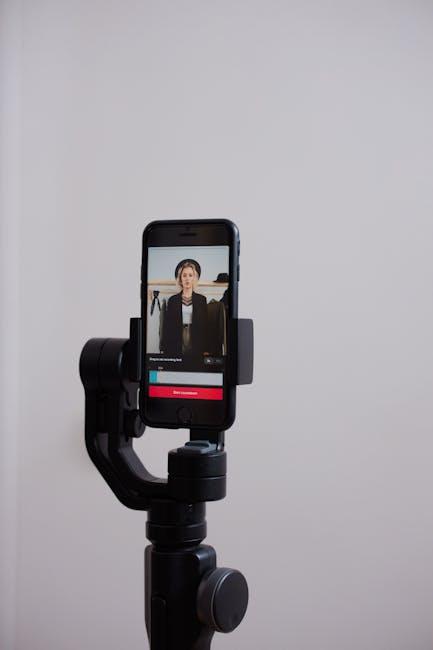In the ever-evolving landscape of home entertainment, the rise of streaming platforms has dramatically reshaped how audiences consume movies and television shows. As services like Netflix, Amazon Prime Video, and Disney+ continue to expand their reach and offerings, questions have arisen regarding the future of physical media formats such as DVDs and Blu-rays. This article explores the impact of streaming platforms on physical media, examining the shifts in consumer behavior, the implications for the entertainment industry, and the potential future of these traditional formats. By analyzing trends and data, we aim to provide a comprehensive understanding of whether streaming platforms are indeed signaling the end of physical media, or if there remains a viable space for both to coexist in the modern entertainment ecosystem.
Understanding the Shift: How Streaming Services Have Changed Media Consumption
The evolution of streaming services has undeniably reshaped how audiences engage with media, moving away from traditional physical formats like DVDs and Blu-rays. This shift is largely driven by the convenience and accessibility that streaming platforms offer. With a few clicks, viewers can access a vast library of content without leaving their homes. Furthermore, streaming services often provide personalized recommendations based on user preferences, enhancing the viewing experience in ways that physical media cannot.
- Instant Access: Streaming eliminates the need to wait for physical shipments or trips to the store.
- Space-Saving: No more need for shelves or storage space dedicated to DVDs or Blu-rays.
- Dynamic Content: Platforms regularly update their catalogs, offering fresh content and exclusive releases.
While some enthusiasts still value the tangibility and collectible nature of physical media, the broader audience is drawn to the cost-effectiveness and ease of use associated with digital streaming. Ultimately, this shift reflects a larger trend towards digital consumption, where immediacy and flexibility take precedence over ownership and physicality.
Examining the Decline: The Impact of Streaming on DVD and Blu-ray Sales
In recent years, the shift from physical media to digital streaming has transformed how audiences consume entertainment. The convenience and accessibility of platforms like Netflix, Amazon Prime, and Disney+ have undeniably played a role in the declining sales of DVDs and Blu-rays. Streaming services offer a vast library of content accessible anytime, anywhere, eliminating the need for physical storage and the constraints of a limited collection. This evolution has led many consumers to prioritize digital subscriptions over traditional disc purchases.
Several factors contribute to this trend:
- Cost-effectiveness: A monthly subscription often provides access to a broader range of titles than the cost of a single Blu-ray.
- Instant access: Streaming allows immediate viewing without the wait for delivery or a trip to the store.
- Space-saving: Digital libraries eliminate the need for physical storage space.
- Frequent updates: Streaming platforms regularly update their content, offering new and exclusive titles that may not be available on disc.
While some collectors and cinephiles still value the tangible ownership and superior audio-visual quality of physical media, the allure of streaming’s convenience continues to shape the future of home entertainment.

Exploring Consumer Preferences: Why Some Still Choose Physical Media
- Nostalgia and Tangibility: For many, the allure of holding a DVD or Blu-ray disc in their hands evokes a sense of nostalgia. These physical forms of media offer a tangible connection to the past, providing a sensory experience that streaming cannot replicate. The act of browsing a shelf filled with colorful cases, flipping through liner notes, or admiring cover art are rituals that digital libraries lack.
- Ownership and Collection: Unlike digital rentals or purchases, physical media provides a sense of true ownership. Consumers who relish collecting enjoy the permanence of DVDs and Blu-rays. They appreciate the ability to lend, sell, or gift their collections without restrictions. For collectors, these discs are not just media; they are treasured artifacts, each with a unique story and place within a curated collection.

Future-Proofing Your Collection: Strategies for Balancing Digital and Physical Media
In an age where digital media dominates, it’s essential to develop strategies that ensure your collection remains relevant and enjoyable. One effective approach is to diversify your media formats. By balancing both digital and physical media, you can enjoy the best of both worlds. Physical media, like DVDs and Blu-rays, offer benefits such as superior video quality and the ability to own content outright without the risk of it being removed from a streaming platform. Meanwhile, digital media provides convenience and accessibility, allowing you to enjoy your favorite content anywhere and anytime.
- Evaluate your viewing habits: Understand what type of content you consume the most and in what settings. This will help you determine the ideal balance between digital and physical media.
- Invest in timeless classics: Consider purchasing physical copies of movies and series that have long-term value and re-watch potential.
- Utilize digital for discovery: Use streaming platforms to explore new content before deciding if it’s worth adding to your physical collection.
- Organize and catalog: Maintain a system for tracking what you own in both formats to avoid unnecessary duplicates and to keep your collection manageable.
By following these strategies, you can future-proof your media collection, ensuring it remains a source of enjoyment for years to come, regardless of the shifts in technology and consumer trends.







































